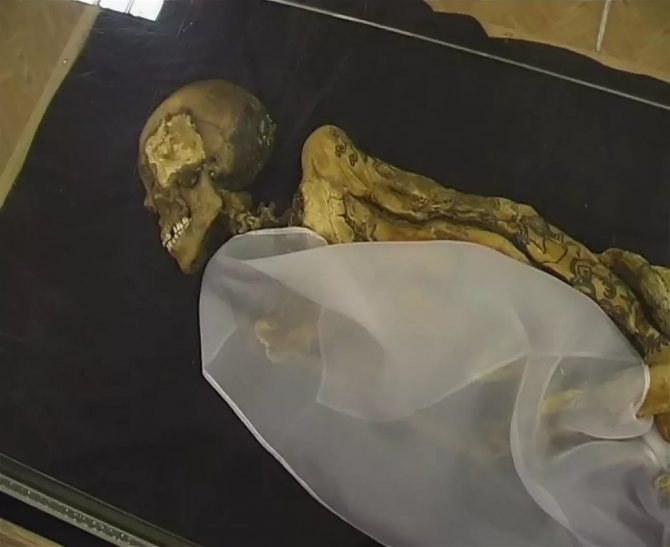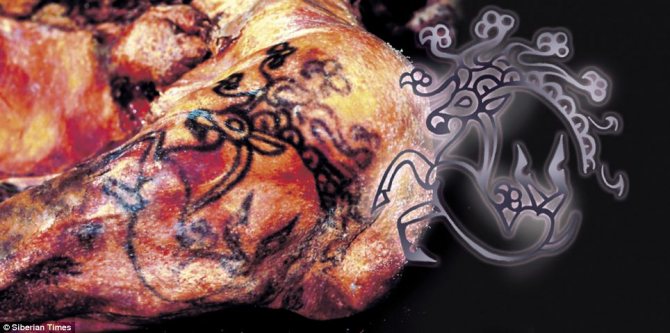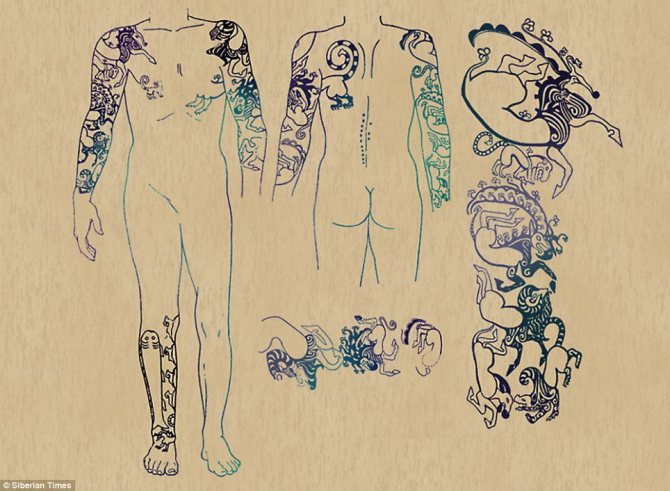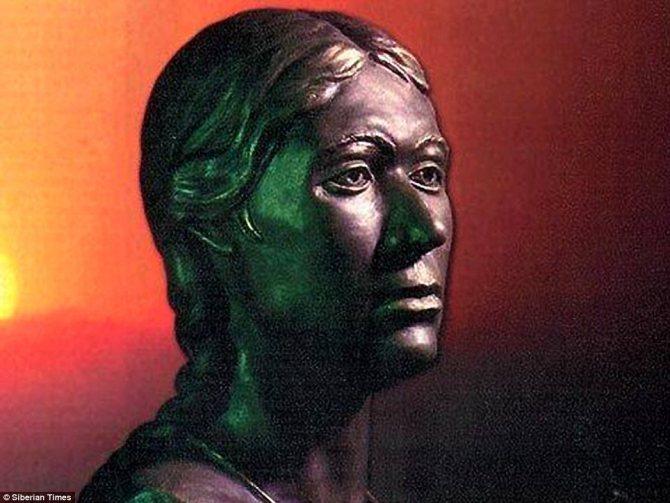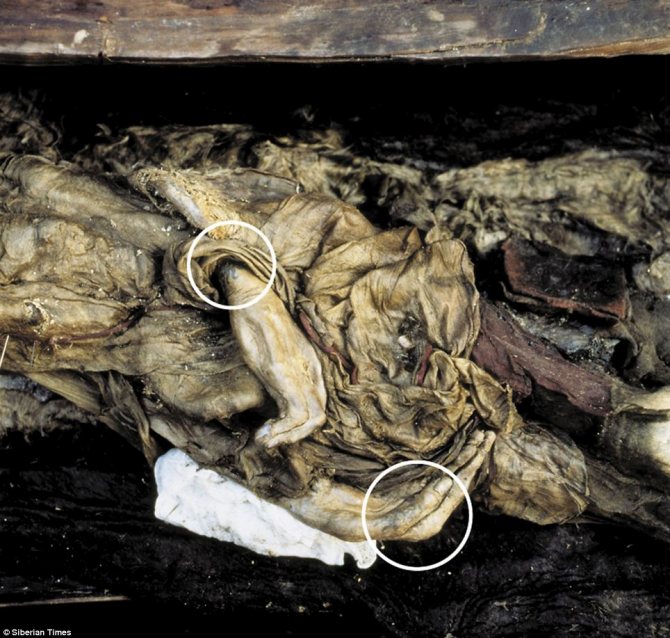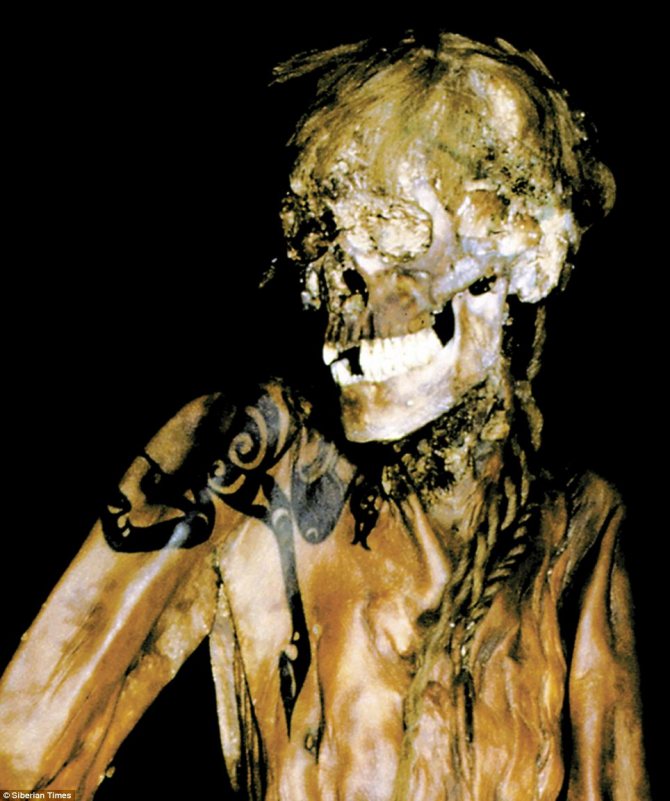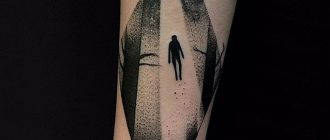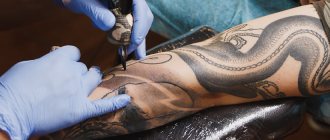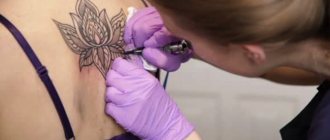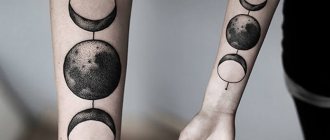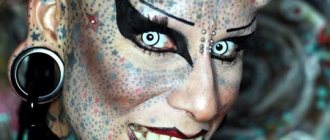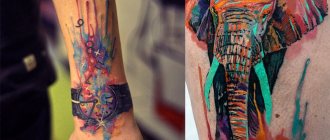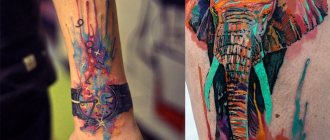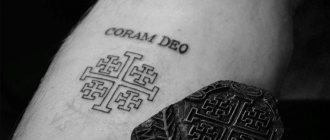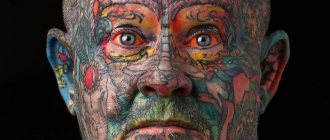Tattoos of the Scythians of the Altai
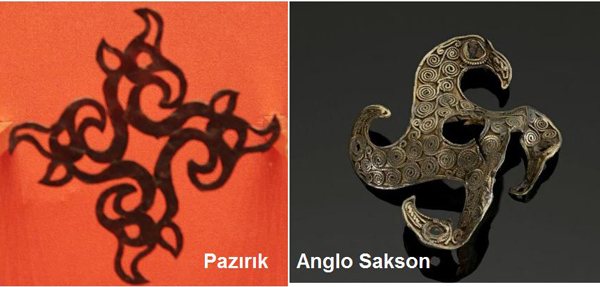
One of the most famous archeological finds of the XX century - frozen in permafrost burial found on the plateau Ukok in the Altai Mountains. "The age of the Altai princess is 2.5 thousand years old. Thanks to the natural freezing chamber of the Altai Mountains all the organics in the burials of the VI-III centuries B.C. have been preserved up to now. The archaeological culture Iron Age was discovered in 1865 by V.V. Radlov excavations of the Berel and Katanda mounds in the Altai Mountains, and in 1929, by the expedition of Academician S. I. Rudenko tract Pazyryk, where were excavated the tombs Pazyryk tribal nobility.
Thanks to the findings of archaeologists, we can see what the people of the Altai looked like 2,500 years ago. ago. After the Pazyryk finds of mummies it became quite clear that tattoos are characteristic of literally the entire ancient world. The tradition of tattooing living in the culture of many peoples testifies to the preservation of ancient pagan customs to the present day.
Tattoos were made in the most primitive way, using needles to draw a picture https://srt.tattoomarket.ru/, then rubbed into the skin black soot or red ink on the skin.
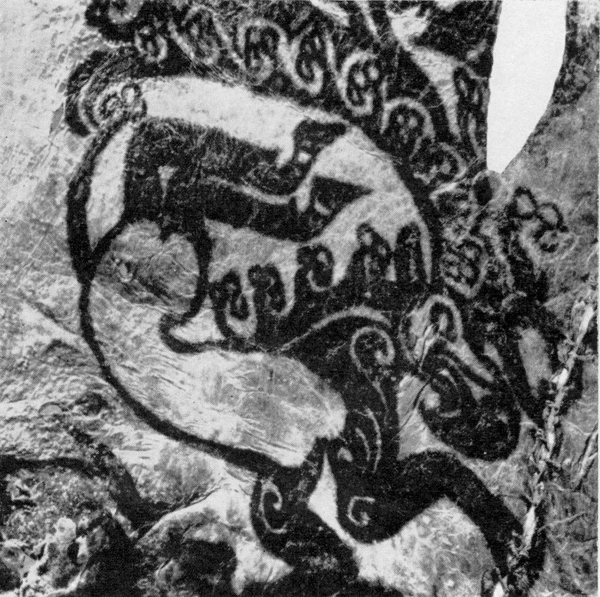

The tattoo is a sign of nobility
In the Scythian tribes tattooed on the body to intimidate enemies, and served as a "pass" to the other world. The tattoo made it clear who is in front of you - a man of noble blood or a slave. Still in some parts of northern India there is an ancient saying that when a dead body is burned, all that is left of it is a A tattoo is an ornament to the soul..
A tattoo is a kind of coat of arms, citizenship and passport. In ancient times, great importance was attached to the bracelet on the forearm, in India it is called bajuband and it is still one of the must-haves for brides. An example of the anatomical essence of tattoo symbolism is the The association of the thumb of the hand with marriage symbols.
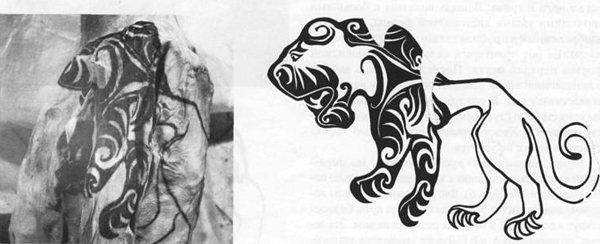

Herodotus of Halicarnassus in his "History" wrote that noble Scythians were distinguished from all others by special tattoos. Men also tattooed after valiant battles and military exploits. The same, who had no drawings on their bodies had no honor at all. In many cultures where there is the cult of military and hunting valor., animals often act as guardian spirits and the hallmarks of a warrior, a fearless hunter or belonging to a particular tribe.
The Roman scholar Pomponius Mela in his Descriptive Biography, pointed out that the tribes of the Scythian Agathirs painted their bodies, but the designs were all the same. And the Greek who lived in the 2nd century AD, the Greek physician Sextus Empiricus mentioned that that the Scythians and the Sarmatians even infants were tattooed as a talisman. He also had his hands, legs below the knee, neck and even buttocks of men decorated with tattoos, but but there are no tattoos on their faces.
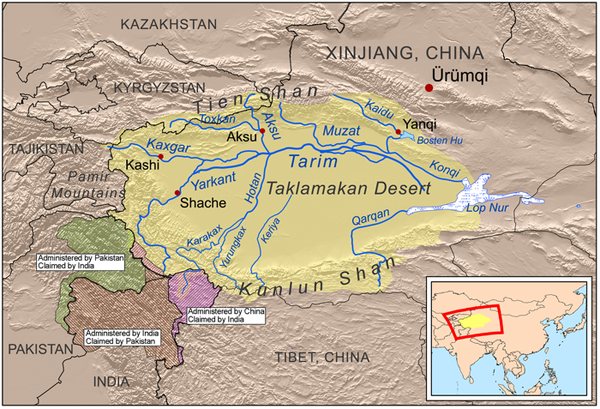

Map of the Tarim River Basin and the Takla Makan Desert
In ancient times, tattoos were simpler.
About what pictures were applied on the skin Scythians, Saka and Sarmatians, archaeologists can judge by the mummies preserved in the Altai Mountains.
The Scythians include Caucasoid mummiesfound in the territory of modern China: in the Takla-Makan desertIn the valley of the Tarim River and in the burial grounds of Xinjiang. Archaeologists believe that these could be representatives of the of the Athanasian nomadic South Siberian culture, who lived about 3,800-2,000 years ago.. These mummies are decorated simple tattoos in the form of geometric figures and plant ornaments. Surprisingly. they're red in color.which is consistent with the writings of Herodotuswho said that the Scythians the Scythians painted their bodies with muri.
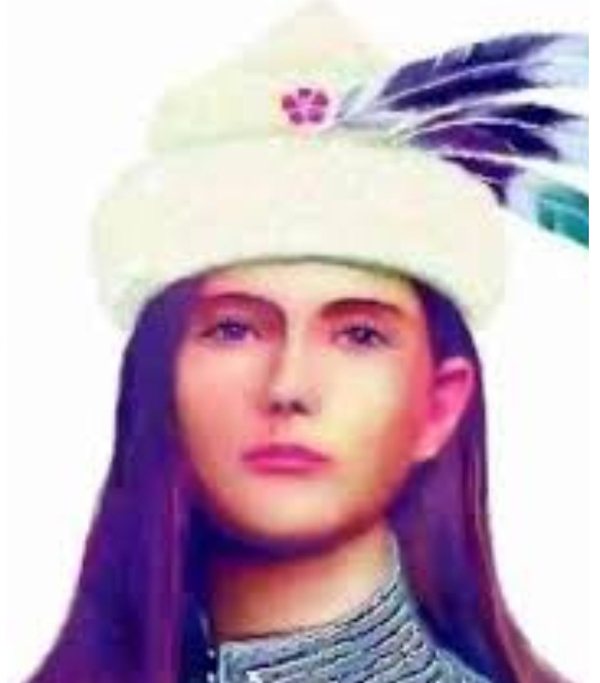

The Appearance of the Loulan Beauty of the Takla Makan
В in 2007 Li Jin, a geneticist at Fudan University (PRC), showed after DNA analysis that genetic markers indicate the origin of Tarim mummies from East Asia. In all of the men analyzed, the Y chromosomes were found to be characteristic of the inhabitants of Eastern Europe, Central Asia, and Siberia-the haplogroup R1a1awhich is very rare in China.
Mitochondrial DNA in females also indicates East Eurasian and West Eurasian ancestry (haplogroups C, H, and K). Dr. Zhou's group concluded that a mixed population inhabited the Tarim Basin as early as the Early Bronze Age in the period 2000-1400 B.C. This indicates that the eastern (Siberian) and western tribes that inhabited the Tarim Basin exhibit mixing of Indo-European tribes with the Siberian population somewhere in the Altai region, from where they may have already come to the Takla Makan.
The faces of the mummies from the of the Subashi burial ground in Xinjiang on the faces of the Subashi cemetery in Xinjiang. lines and spirals on the cheeks and forehead. One woman, for example, has yellow spirals descending from the upper eyelids of her eyes through the bridge of her nose to the wings of her nose, and her cheeks show red triangles with yellow spirals inside.
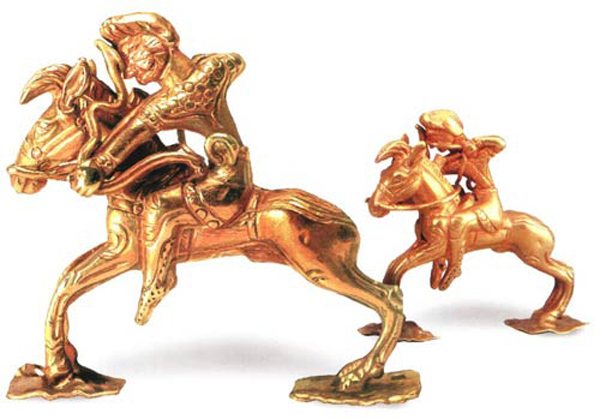

Mysterious lines on faces.
Curiously enough, tattoo drawings are found on Scythian statuettes and on the jewelry. For example, three parallel horizontal lines on the cheek are depicted in the image of the deity found at the site of the "Thick grave" near Dnepropetrovsk.. A similar tattoo mark is found on a figure of a Scythian horseman from Peter the Great's Siberian Gold Collection, and on the face of a man on a ring from the Issyk barrow in Kazakhstan.
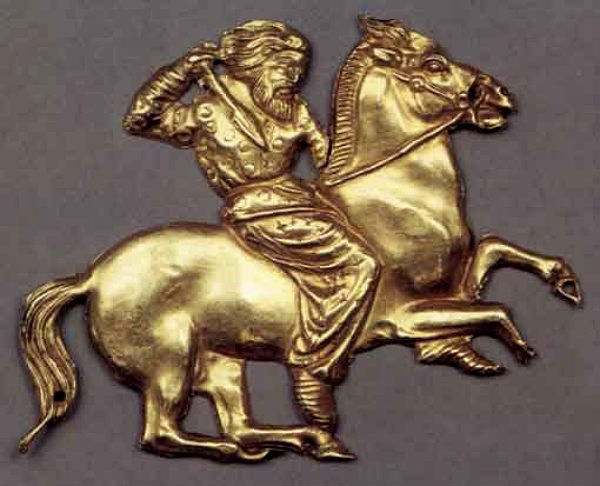

A similar mark, perhaps exactly tattoo, was also found in the Sarmatians. On the metal plaques of a bridle found Balakleya (Kharkov region of Ukraine), archaeologists saw an image male face with lines on the cheek. Such a tattoo also took place with the The Sogdians, an Iranian peopleThe Sogdian people lived between the Amu Darya and Syr Darya rivers in Central Asia: Sogdian men drew three stripes on each cheek.
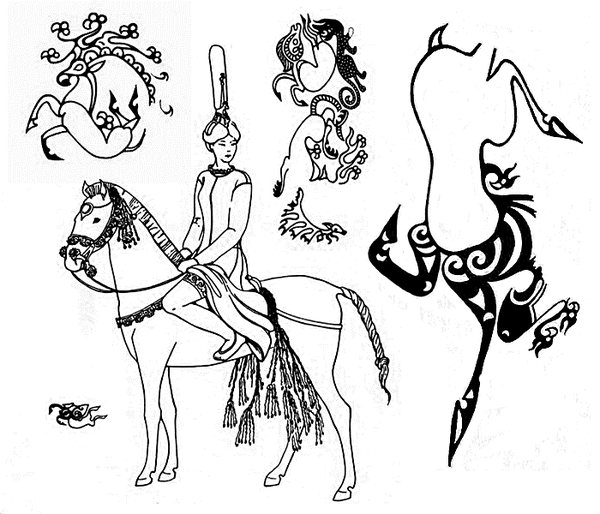

Birds, beasts and griffins.
In the Scythian barrows of the Pazyryk culture (6th - 3rd century BC) in the Altai Mountains were discovered in the XX century well-preserved mummified remains of people who lived 2,500 years ago, scientists discerned on their bodies remarkable in its artistic value of tattoos with complex designs. As he wrote in his work "Tattoo and body painting in the Scythian military culture"historian Alan Akimovich SlanovThree Scythian mummies out of eight had pictures on their bodies: a 60 year old man from the Second Pazyryk barrow, a man from the Upper Kaljin ice burial.
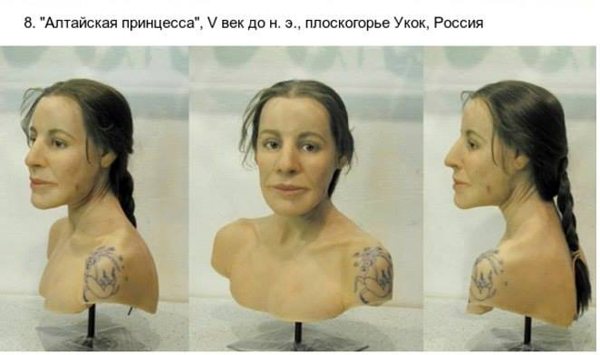

The women of this nomadic Scythian tribe also had tattoos, the famous mummy of the "Ukok Princess"from the Ak-Alakha burial ground in the 5th-3rd centuries B.C. The Ukok Princess is considered to be a representative of the higher stratum of Pazyryk society. Fantastic animals are depicted on most of the tattoos, there are images of arkhar, a pair of hoofed mammals, deer antlers.a predator of the family cat family predator, horse, kulan.
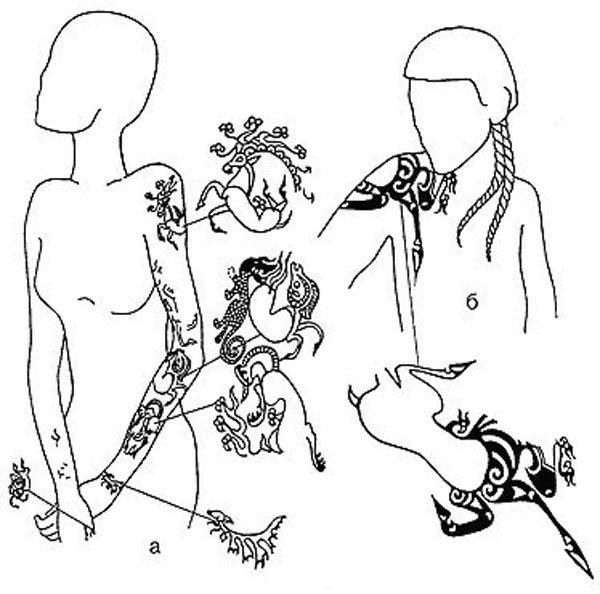

The shoulder of a woman from the Altai plateau of the Ukok decorated the shoulder of a griffin with a twisted body, hooves, beak and deer horns. The head of the griffin, but in a reduced size, was repeated as an ornament on the horns of the creature and on its back. Below the griffin was a hunting scene: a ram with its head thrown back and a spotted leopard with a twisted tail grabbing its legs. And even lower is a mythical beast with clawed paws, a striped tail, the body of a deer and the head of a griffin. On the wrist of the Scythian princess was pinned the head of a deer with branching horns. The drawing of the twisted animal was repeated on a phalanx of the thumb. Scenes of life-and-death struggles between predators and prey are characteristic of the "Scythian animal style.
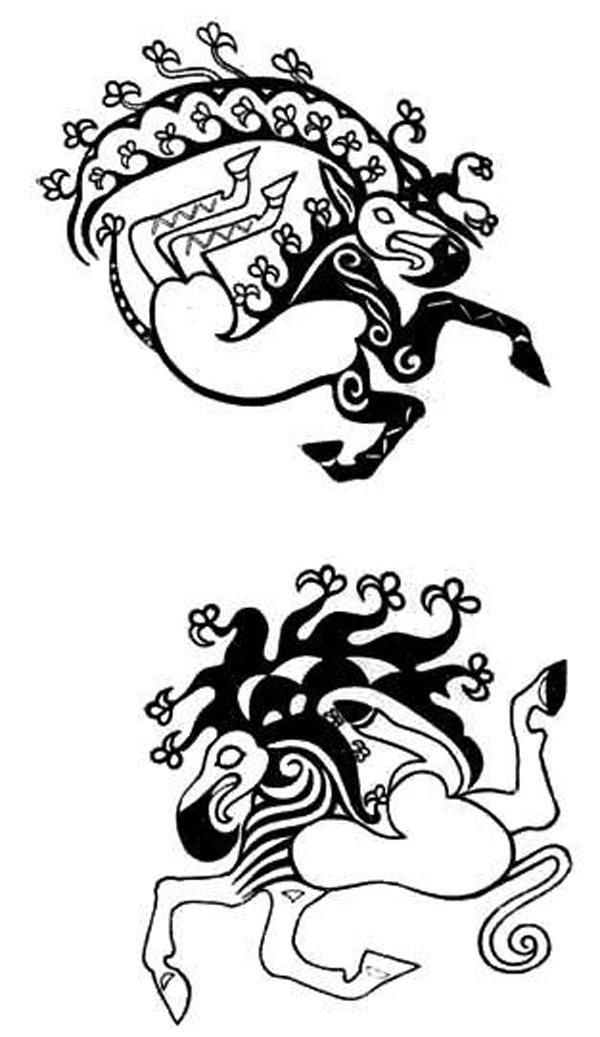

The Scythians who lived in the Altai Mountains in the Altai Mountainsmade tattoos on their chests, arms, forearms, shins, fingers and along the spine. Almost all of the tattoos were zoomorphic. For example, Mongoloid male from the Second Pazyryk Kurgan was covered with elaborate drawings that occupied most of his body. On the left side of his chest was a depiction griffin running upward and toward his right shoulder. On his right leg were tattooed a fish and a chain of mountain rams, the argali; his right arm was wrapped around a winged monster, most likely a dragon, a donkey, some mythical creature with protruding paws, and another argali. The argali in the jump was also on the left arm. On the arm was another animal that combined the features of a of a leopard, an eagle and a deer.
Specialists have suggested that the drawings were placed on the body so that they seem to come to life when they move. Along the spine of the man stretched "healing" marks in the form of dots.
The third Scythian tattoo is similar: a mythical hoofed animal located on his shoulder in such a way as if it thrown over the shoulder. Ethnographers believe that the image of this creature on the shoulder had a ritual meaning: the magic monster could guard the gates to the other world and let in only those people on whom he saw his seal.
Archaeologist and historian Natalia Polosmak in her article "Birds in the Pazyryk Tattoo" tells us that The ancient Roman historian and historian of the Roman Empire said in an article "Birds of the Pazyryk people tattooed on their fingers.
The ancient Roman historian Ammianus Marcellinus in the 4th century wrote that Scythians painted their faces with paint, their bodies and hair blueand the brightness of their coloring depended on their wealth. But the literary man Moor Gonorath believed that some Scythians dyed their hair black..
Jordan about the island of Scandzia
The Sarmatian mounds of Astrakhan - the golden "Bogomolny sands"
The mystery of the Altai princess
Shamans of the Altai region are convinced that the girl was not a princess. In their opinion, she was the ancestor of the Altai people and a guide between this world and the other world. This is how they called healers, sorcerers, and healers. This is evidenced by the place of burial away from other crypts, although Pazyryk people used to bury in family clans as well.
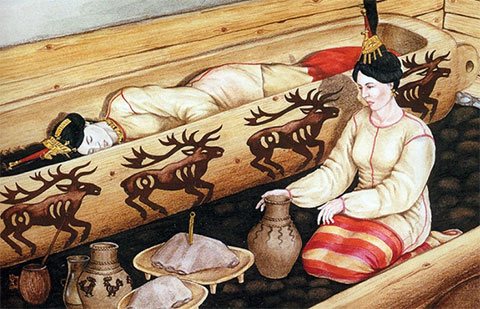

Reconstruction of the burial of the "Altai princess"
Scientists were able to find out that the girl was not buried immediately - only a few months later. Perhaps there were some ancient rituals performed before the burial of such an important person. The body was embalmed with special mixtures of oils, resins, mercury and wax.
Scientists have also found out what caused the death of the "Princess of the Ukok". It was the fourth degree of breast cancer. The disease, unfortunately, does not spare even healers and herbalists.
Reconstruction according to medical data
As a child or adolescent, she contracted osteomyelitis. The causes of this rather severe disease, accompanied by pain and a generalized infectious process, lay in unfavorable living conditions and trauma.
When she was in her early twenties, another serious illness overtook her, breast cancer, which had been painfully destroying her for the past five or seven years. On her last wintering trip to the Ukok in October she arrived totally ill: in the modern language she was diagnosed with the 4th or the last stage of breast cancer. This stage was characterized by severe pains and severe intoxication causing loss of physical strength.
Magnetic resonance imaging revealed a number of focal changes with increased MR signal in the mummy. It is possible to assume several variants of origin of these foci, but it should be noted that in any case they are a manifestation of sufficiently severe pathology, which could be the cause of the lethal outcome. Let us name the two most common variants of the origin of pathological foci, especially since they clearly fall into two separate groups according to the nature of the MR signal. Option one is osteomyelitis as a manifestation of a general septic process, and option two is oncology.
In this condition, she may have fallen from the horse and sustained severe injuries. The fall was on the right side: the right temple, right shoulder and right hip joint were injured. The right arm was uninjured during the fall as it was pressed against the torso. Probably by this time this arm was already inactive, as evidenced by the pathological change of its tissues, reflecting, in fact, the process of decay of living tissue. However, even after such an injury, she was probably still alive, as there are vestibular swelling changes in the groin and axillary areas on the right side.
...The presence of dense nodes in the right axillary space and a node in the right mammary gland indicate a vestibular process that spread from the center to the periphery <�...> Pathologically, we can assume that we are dealing with tissues with abnormal properties; most likely a primary tumor in the right mammary gland and with lymph nodes affected by tumor metastases
Why do we think the fall occurred precisely when she moved to winter pasture? Because in her condition (extreme exhaustion, intoxication, back sores and lymphedema forming on her right arm), roaming might have been the only reason to get on the horse and hit the road. The sick woman was not abandoned or killed, putting her out of her misery, but taken with her. And once on the Ukok, she obviously never got up again...
According to pathologists, judging by the condition of the mummy, the body could have been preserved for two or three months, at most six months. The burial took place in the middle of June, as evidenced by the last feed of one of the horses buried with the woman, consisting of twigs, on the annual rings of which there were already new cell formations characteristic of this period of the year. It also follows from the pollen analysis that the burial took place in conditions similar to the spring period of the Altai highlands.
Based on these data, we can conclude that the woman's death occurred either in January or in March. In either case, she did not die instantly from the head injury, which would have been a relief from her anguish and pain, but she lived another 3 to 5 months. And all that time she was bedridden. Her general well-being before she passed away was undoubtedly very grave. How not to recall here a famous researcher of Yakut shamanism A. А. Popov (2006), who noted that famous shamans die in terrible agony.
The Curse of the Mummy
It is said that when they dug out the mummy, the ground around trembled, and the helicopter, which was carrying it, several times made an emergency landing.
Cataclysms upon the land of Altai really poured out of the horn of plenty. Earthquake, heavy hail, increased number of suicides in the region, and finally, heavy flooding ...
Could "Ukok Princess" be to blame for all this? Local inhabitants especially believe in it. Altai people sacredly believe that the priestess guarded the gates of the underworld, so that the unclean spirits were not free and did not run amok. People of Altai believe that all disasters that fell on the land of Altai are the revenge of the White Lady.
In addition to all this, allegedly even before the beginning of the excavations, a certain little girl from a nearby village had made a prediction. She confidently declared that the scientists would disturb the grave of a noble priestess, who would curse the land of Altai for it.
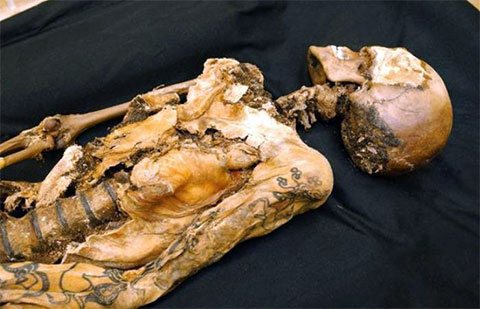

The Mummy of the "Altai Princess" in the laboratory
In December 2015, several residents of Altai filed a lawsuit for the return of the "Ukoki Princess" to her homeland. And not just about the return, but also about burial. More than 22,000 signatures were collected from local residents. Initiator of the claim was shaman Akai Kine, respected by the locals.
Submission of the statement of claim was preceded by numerous meetings, public actions, addresses to different instances, including the Academy of Sciences of the Russian Federation, the Altai Republic Government, the prosecutor's office, the Presidential Administration of Russia and personally to Vladimir Putin. Due to numerous appeals from representatives of the small peoples of Siberia, a public committee for the burial of remains (mummies) was formed in the Altai Republic.
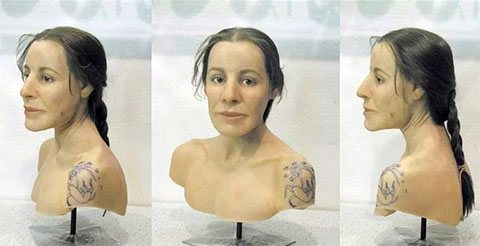

Recreating the image of the Altai princess
The people were so zealous in demanding a solution to this problem that politicians began to use it to their advantage, promising to return the princess if they were elected to one position or another. But in the end, the suit was dismissed.
Akai Kine commented on the decision of the Gorno-Altaisk City Court, which dismissed the lawsuit to bury the mummy of the Altai princess:
"We are not able to resist the established "moral" norms of the modern world, when it is considered normal to excavate the dead and to stir up the ashes of ancestors. According to our worldview, the worldview of the indigenous people of Altai, this is unacceptable.
Siberian Ice Maiden - Is She Alone?
Since the discovery in Siberia many mummies, men and women, have been discovered. So today we can talk about at least two Siberian Ice Maidens. (In fact, eight mummies have been found, but some were discovered in the middle of the 20th century, when the possibilities for research and preservation were limited.)
One mummy had tattoos, but the others did not. How so?
Scientists consulted forensic experts. And indeed, infrared studies conducted according to their advice showed that all mummies without visible tattoos still had tattoos, and they were clearer and more beautiful, but they were not visible to the normal eye!
